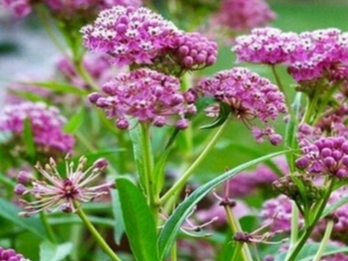Community Corner
Warm Season Perennial Plant Favorites
Since it's summer, individuals need to grow warm-season perennials that provide spectacular spots of color!

This is a paid post contributed by a Patch Community Partner. The views expressed in this post are the author's own, and the information presented has not been verified by Patch.
Since it's summer, individuals need to grow warm-season perennials that provide spectacular spots of color in gardens and surrounding environments. The most challenging part of growing warm-season plants is selecting the most appropriate plants for the summer. If an individual wants to grow warm-season plants during the summer, here is a list of plants they can grow and can purchase at https://www.tnnursery.net/moss-for-sale/.
Milkweed Plant: The genus name of a milkweed plant is Asclepias, a title given to commemorate the Greek god of medicine, Asklepios. The reason was that few species of milkweed plants helped treat several diseases. Milkweeds are elegant and delightful garden plants. These plants have attractive colors and wafting fragrant flowers that make them pleasant to humans, monarch butterflies, and caterpillars. Milkweed plants grow approximately 5 to 7 feet tall. The height allows one to spot these loving and elegant plants from a distance easily. The plants have slender leaves, which are 15 to 20 centimeters long and 5 to 9 centimeters wide. The color of the leaves' upper surfaces ranges from light green to dark green. The lower surface of the leaves is softer and, sometimes, white. Milkweed plants have numerous tiny flowers that begin to grow off and bloom below the central flower. The flowers are vanilla-scented; thus, they attract a profusion of butterflies and pollinating insects and act as an essential food source for them. Milkweeds grow in well-drained and clump-free soil beds that have been worked finely with a rake or rototiller. After sowing the seeds, an individual should compress the roots to the soil to ensure good soil-to-seed contact. An individual should keep the seedbed moist once the seeds sprout until they establish.
Find out what's happening in Bostonwith free, real-time updates from Patch.
.png)
Black-Eyed Susan Plants: The scientific name for these plants is Rudbeckia hirta. They are native and warm-season plants in the Asteraceae family. Black-eyed Susan plants often grow approximately 2 to 3 feet tall. The plants have alternately arranged basal leaves that are 7.5 centimeters wide and 10 centimeters long. The flowers of these plants are 10 centimeters wide, and the color of the petals ranges from yellow to orange-gold. The plants' nectar attracts butterflies, bees, and other insects, which are integral in spreading pollen from one flower to another while drinking nectar. The spread of pollens helps the plants to produce fruits and seeds that the wind can quickly disperse. Black-eyed Susan plants grow in optimum temperature of 70 degrees Fahrenheit, in soils with balanced pH, and in full sunlight to moderate shade settings. It is worth noting that the plants are pest and disease-resistant.
.png)
Virginia Bluebell Plants: The botanical name of these plants is Mertensia virginica. They are perennial and native plants of North America. Virginia Bluebell plants belong to the Boraginaceae family and are relatives of species such as Longwrot and Comfrey. They reach heights of up to 2 to 3 feet. The plants' leaves are mostly rounded and hairless. The upper leaves have a floppy and soft appearance because they are stalkless. The lower leaves are often slightly larger than the upper leaves and grow up to 3 to 6 inches. The leaves of Virginia Bluebell plants have pinnate vein patterns that add beauty to their overall appearance. These plants have flowers that have a trumpet-like shape with colors that range from light blue to slightly darker shades. Virginia Bluebell plants grow well in rich, well-drained soils with neutral PH value.
Find out what's happening in Bostonwith free, real-time updates from Patch.

Partridgeberry Plants: The genus name of these plants is Mitchella. They are native plants of Central and North America and belong to the Madder Family (Rubiaceae). The plants grow to heights of 2 inches and widths of 6 to 12 inches. The plants have evergreen leaves, simple, opposite ovate, and pale-yellow stalks. The flowers often expand into four petals as they bloom. The petal tips usually possess a heavy coat of small white hair. The plants have edible berries and flavors ranging from mild to sour or cranberry-like. The berries result from two fertilized flowers when the ovaries of both flowers merge. Humans tend to consume the berries and use them to make jam, sauce, or pie. The berries also attract several birds and insects. Partridgeberry plants grow well in well-drained soils rich in humus and full sunlight to moderate shade settings.

Vinca Minor: This is a species of flowering plant in the dogbane family. Vinca minor is a perennial and native plant of North America. These species grow to heights of 1 to 2 feet tall. The plant's leaves are evergreen, opposite, 2 to 4.5 centimeters long, and 1 to 2.5 centimeters wide. Vinca minor produces gorgeous blooms and purple flowers, thus making it a perfect fit for use in a container garden and as a border plant. The plant grows in well-drained soils and environments with minimal precipitation and comprises partial sun, partial shade, and full shade.

This post is an advertorial piece contributed by a Patch Community Partner, a local brand partner. To learn more, click here.